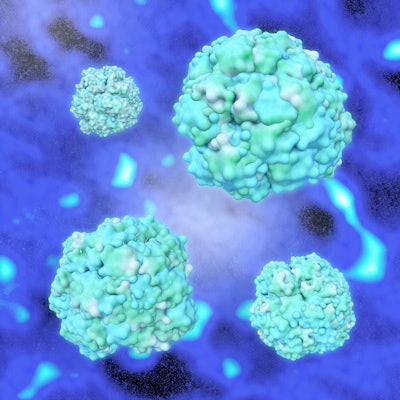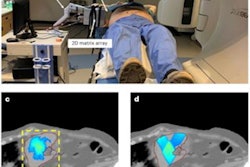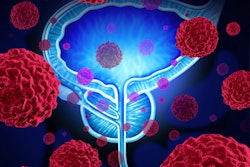
Men with high-risk prostate cancer can be treated safely and effectively with just five weeks of radiation therapy, according to research presented at the American Society for Radiation Oncology (ASTRO) annual meeting in San Antonio.
 Dr. Niazi Tamim.
Dr. Niazi Tamim.Results from the Canadian multicenter Prostate Cancer Study 5 (PSC5) phase III trial showed that the standard eight-week course of therapy usually offered to high-risk patients did not offer any added benefit compared with five weeks of treatment.
"Survival rates and side effects, both short-term and long-term, were similar with moderately shortened radiation therapy," said lead study author Dr. Tamim Niazi, an associate professor of oncology at McGill University and a radiation oncologist at Jewish General Hospital in Montreal.
The researchers examined whether delivering moderately higher doses of radiation therapy per day in conjunction with long-term androgen deprivation therapy (ADT) could potentially maintain the same prostate cancer control rates as with standard fractionation, but in a shorter period of time.
In fractionation, a dose of radiation is divided into multiple "fractions," which seeks to maximize the destruction of malignant cells while minimizing damage to healthy tissues. Large, randomized studies have confirmed the safety and efficacy of moderately shortened, or hypofractionated, radiation therapy for patients with low, intermediate, or mixed-risk prostate cancer.
The phase III trial is said to be the first to show the same results specifically for men with high-risk disease, which affects roughly 15% of men diagnosed with prostate cancer who face greater risk of cancer spread and dying from the disease.
Niazi noted that the radiobiological properties of prostate cancer cells make them particularly sensitive to changes in radiation therapy fraction size. In the trial, 329 patients with high-risk disease were randomized to receive either standard/conventionally fractionated prostate radiation (76 Gy in 38 daily sessions) or moderately hypofractionated radiation (68 Gy in 25 daily sessions). All patients also received radiation to the pelvic lymph nodes and long-term ADT before, during, and after radiation (median duration was 24 months).
Seven years after completing radiation therapy, the men who received hypofractionated or standard treatment had similar rates of recurrence and survival.
| Similar performance for standard vs. accelerated radiation therapy in high-risk prostate cancer | |||
| Standard 8-week treatment | Accelerated 5-week treatment | p-value | |
| Overall survival | 82% | 81.7% | p = 0.76 |
| Prostate cancer-specific mortality | 96.4% | 94.9% | p = 0.61 |
| Biochemical recurrence | 85.1% | 87.4% | p = 0.69 |
| Distant metastatic recurrence | 91.8% | 91.5% | p = 0.76 |
| Disease-free survival | 83.4% | 86.5% | p = 0.5 |
Side effects were also similar between the treatment arms. There were no grade 4 toxicities in either arm, and there were no significant differences in severe short-term or long-term genitourinary and gastrointestinal toxicities. Niazi said the team was pleasantly surprised that side effects were not significantly more pronounced with accelerated treatment.
Completing hypofractionated treatment for prostate cancer in 25 days instead of the usual 38 to 40 days, gave patients back time for daily life and saved on the costs of attending clinic, Niazi said.
He added that some patients were excluded from the trial and should still be treated with eight weeks of radiation, such as those who had had prostate treatment (focal therapy) and those with active inflammatory bowel disease.



















